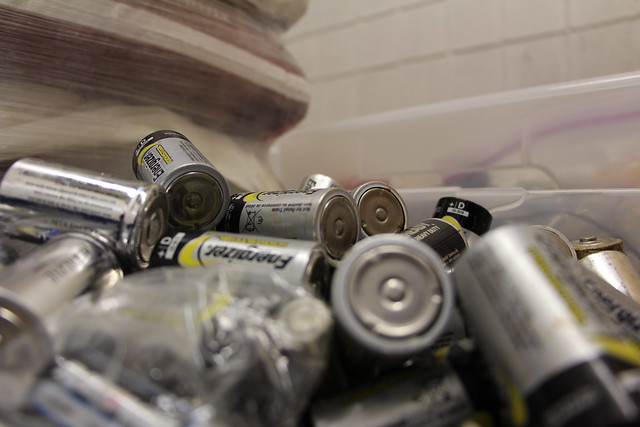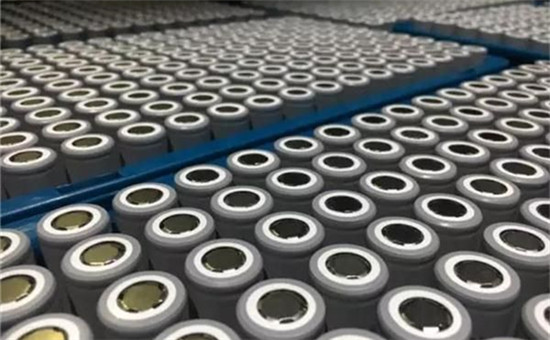Lithium Ion Battery Watt Hours-Calculation And Protection
Dec 25, 2019 Pageview:5186
If you're going to ship or fly with lithium cells, batteries or battery packs by rail, you'll need to know their Watt-hour value. It applies to lithium-ion (disposable) and lithium-ion (rechargeable) batteries.
How Many Watt Hours Are In A Lithium Ion Battery?
You may be confused with battery capacity by many different terms, such as Wh, mAh, Ah... There are some tips that might help you understand it:
1. Which is Watt-hour.
100 Watt-hour battery is capable of delivering 100 watts for 1 hour, 20 watts for 5 hours.
BiX Power likes to use this unit because it is much more accurate and can compare different batteries. A 200 Wh battery would definitely have more power than a 100Wh battery.
2. MAh or Ah means the hour of milliamps (mAh) or the hour of amps (Ah).
This is a term that is very deceptive. It should always be associated with a voltage when a battery is rated with mAh or Ah. A battery capacity of 10Ah @12V is better than a battery of 10Ah @5V.
Nevertheless, when stating their mAh (or Ah) power, there are a number of lithium batteries in the market that do not state voltage. Lithium battery cell voltage, which is 3.6V or 3.7V, is most likely to be determined in these cases. This would be its effective Watt-hour efficiency by time 3.6 (or 3.7), then divided by 1000. For instance, the actual capacity of a 10,000mAh battery is 10000x 3.6/1000= 36 Watt-hour.
Only when they have the same voltages can you equate two battery capacities by Amp-hour. Whether two batteries have different voltages, it will be more appropriate to use the Watt-hour.
1. Amp hour battery is capable of supplying 1 Amp power for 1 hour.
One watt-hour = one amp-hour x one volt.
Comparing battery capacity by Watt-hour, not Amp-hour, is recommended. By comparing batteries with different output voltages, Watt-hour is a more reliable measure to display the power capacity than Amp-hour.
3. There are two different concepts of battery capacity and maximum output power. A battery of 300 Watt-hours can only produce a maximum output of 100 Watt.
Let’s consider the gas tank of the vehicle. Capacity is the amount of gas that the tank can carry. The pace that the car can drive output power. A big Wh (or mAh) battery is just like a huge tank engine. A car with a large gas tank can travel very long distances, but this does not mean that the car can drive very quickly, A battery with a large Amps-hour capacity may last long, but this does not mean that the battery is capable of producing large Amps.
4. Usually a battery Watt-hour capacity is calculated based on nominal capacity of the battery cells.
For example, if a nominal capacity of a battery cell is 3.7Vx 2350mah=8.7 Wh and a battery pack is made up of 18 cells, then the capacity of the battery is rated as 8.7x 18= 156.6Wh.
Under standardized test conditions, a battery cell capacity is measured and allows the comparison of different battery cells. Nonetheless, a battery cell's actual power output is typically less than the nominal power output under real conditions. Conditions will never be as good as in a lab.
When using multiple battery cells to make a battery pack, many additional control circuits may need to be added to provide security protection and some feature of charging / discharge. Such extra circuits need some battery cell power to be used. During charging, the lithium ion battery must discharge itself. Lithium ion battery safety control circuits can cut off battery output before the battery is actually fully discharged in order to prevent over-discharging of the lithium ion battery. Because of these factors, a battery pack's real output power will be less than the battery-rated capacity.
How Do You Calculate Lithium Ion Battery Watt Hours?
Normally the watt hours of battery is stated on the battery itself. If not, then it can be measured as;
Volts x ampere hours (Ah) = Watt hours
Example 1: A 4,400 mAh 11.1 volt battery
Divide the mAh rating by 1,000 first to get an Ah rating of 4,400/1,000 – 4.4ah.
Calculate now as-4.4Ah x 11.1 volts = 48.8Wh
Example 2: A battery of 12 volts 50 Ah
50 Ah x 12 volts = 600Wh
How Do You Pre-Long Lithium Ion Battery Cycle Life?
A combination of multiple factors usually increases or reduces battery life. To pre-long battery cycle life following ways should be considered;
Using partial cycles of discharge
The use of just 20% to 30% of the battery capacity before recharging will greatly increase the cycle life. In general, 5 to 10 shallow cycles of discharge are equivalent to one complete cycle of discharge. Although partial-discharge cycles can number in the thousands, maintaining the battery in a fully charged condition often shortens battery life. When necessary, full discharge cycles (depending on the chemistry up to 2.5 V or 3 V) should be avoided.
Choose the appropriate termination form for charging.
Choosing a charger that requires a minimum charge-current termination (C/10 or C / x) can also prolong the life of the battery by not charging to 100%. For example, stopping a charge cycle when the current decreases to C/5 is equivalent to reducing the float voltage to 4.1 V. In both situations, only about 85 percent of the battery's power is charged, which is an important factor in battery life.
Reduce the temperature of the battery.
Limiting extreme battery temperatures increase battery life, banning charging below0 ° C in particular. Charging below 0 ° C encourages battery anode metal plating that can turn into an internal short, generating heat and making the battery unstable and dangerous. Most battery chargers have battery temperature measurement requirements to ensure that charging does not occur at extreme temperatures.
Avoid high load and discharge currents.
Lower cycle life by high load and discharge currents. For higher currents such as Li-ion manganese and Li-ion phosphate, certain chemicals are more appropriate. High currents put too much tension on the battery.
Leave Message
Hottest Categories
-
Hottest Industry News
-
Latest Industry News












